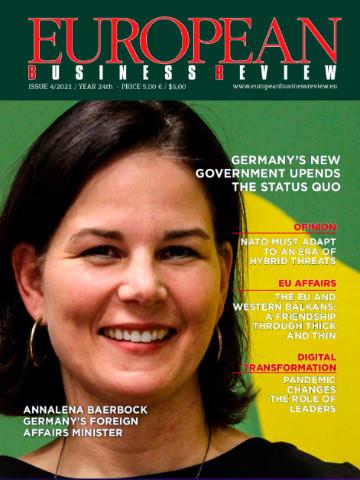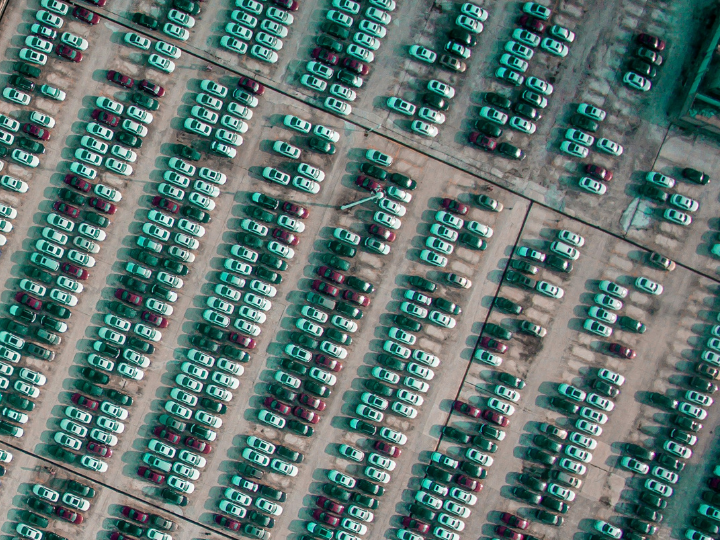People in the early 20th century were hopeful about the future innovation might bring

In fact, many of those predictions for the future in which we live weren’t far off, from the proliferation of automobiles and airplanes to the widespread transmission of information. Of course, the specifics of how those devices would work sometimes fell broad of the mark. Yet these predictions show us just how much our technology has progressed in just a century — and just how much further more innovation could take us.
by
Claudia Geib*
The technology that came out of World War I, and the growing potential brought by electricity (half of all U.S. homes had electric power by 1925) had many looking ahead to the coming century. Futurists of the early 1900s predicted an incredible boom in technology that would transform human lives for the better.
In fact, many of those predictions for the future in which we live weren’t far off, from the proliferation of automobiles and airplanes to the widespread transmission of information. Of course, the specifics of how those devices would work sometimes fell broad of the mark. Yet these predictions show us just how much our technology has progressed in just a century — and just how much further more innovation could take us.
Calling the Future
On a cool February day in 1917, storied inventor Alexander Graham Bell gave the graduating class of McKinley Manual Training School a rousing speech that would later sound a bit like prophecy.
“Now, it is very interesting and instructive to look back over the various changes that have occurred and trace the evolution of the present from the past,” Bell said, after recalling the incredible transformation wrought by electricity and automobiles alone. “By projecting these lines of advance into the future, you can forecast the future, to a certain extent, and recognize some of the fields of usefulness that are opening up for you.”
In 1876, Bell himself had patented the device known as the telephone, which used wires to transmit the sound of human speech. As this device spread, its capabilities allowed voices to cross enormous distances. In 1915, one such “wireless telephony” system had allowed a Virginia man to speak to another in Paris while a man in Honolulu listened in — a distance of 4,900 miles (about 7,886 kilometers), setting the record for the longest distance communication at that time.
Bell marveled at this achievement and the change it had already created, predicting that “this achievement surely foreshadows the time when we may be able to talk with a man in any part of the world by telephone and without wires.” At the time of Bell’s speech, the U.S. had an estimated 11.7 million working telephones; by the year 2000, that number had risen to nearly 103 million.
Extrapolating forward, Bell predicted a future in which this technology allowed people to pretty much anything remotely: “We shall probably be able to perform at a distance by wireless almost any mechanical operation that can be done at hand,” he said. And he wasn’t wrong.
Transportation of the Future
People a century ago were obsessed with the travel of the future. By 1914, the Ford Motor Company had developed the first moving assembly line, allowing the company to produce 300,000 cars in a single year. With transit beginning to transform society, futurists began imagining a world in which every person from Miami to Moscow could own their very own automobile. In that regard, they weren’t too far off — 95 percent of American households own cars, according to a 2016 government report. But those imagined automobiles looked a bit different from the ones we know today.
On January 6, 1918, the headline of an article in The Washington Times announced that the “Automobile of Tomorrow Will Be Constructed Like a Moving Drawing Room.” The author was writing about a prediction in Scientific American that described the car of the future. It would be water-tight and weather-proof, with sides made entirely of glass, and seats that could be moved anywhere in the vehicle. It would be decked out with power steering, brakes, heating, and a small control board for navigation. A finger lever would replace the steering wheel. Other designs imagined that cars would roll around on just three wheels, or on air-filled spheres to remove the need for shocks.
Future-forecasters of the early 1900s were enthralled by the idea that our everyday travel would not be confined to land. Take, for example, the series of postcards produced between 1899 and 1910 by French artist Jean-Marc Côté and his collaborators, who seemed confident that by the year 2000, we would have already colonized both sky and sea — and recruited some of their residents for our transit purposes.
Air travel was foremost in people’s minds: The Wright brothers made their first successful flight of a powered airplane in 1903, spurring other inventors and engineers to test innumerable aircraft designs before World War I. As such, it’s not surprising that Côté’s minute works imagined that, by the year 2000, nearly every form of transportation would be via air. Aerial taxi services, floating dirigible battleships, a flying postman, and air-based public transportation all appear in the whimsical depictions of our predicted current day.
Some craft, like an aerial rescue service or planes outfitted for warfare, are now an everyday part of military forces (though we don’t yet have the “French invisible aeroplane” that Scientific American promised was forthcoming in 1915).
Other predicted technologies, like personal flight devices that allow humans to huntor play tennis aloft, may become features of our near future once jet packs become available. Indeed, personal flying machines are a prominent feature of the 21st century as envisioned from the 19th and 20th — particularly the concept that personal flying cars would become commonplace. Forward-looking Victorians, such as artist Albert Robida in 1882, assumed the skies would be thick with flying cars by 2018.
In the May 1923 issue of Science and Invention, science fiction writer Hugo Gernsback described his vision for these flying cars, which he dubbed the “helicar,” as a solution to the automobile traffic he already saw jamming the streets of New York City:
The only practical solution is to combine the automobile with an airplane and this no doubt will happen during the next few decades. The Helicopter Automobile or, for short, the helicar, will not take up very much more room than the present large 7-passenger automobile, nor will it weigh much more than our present-day car, but instead of rolling down the avenue, you will go straight up in the air, and follow the air traffic lines, then descend at any place you wish.
We might not yet have a flying machine parked in every garage, but organizations such as Uber and NASA, the Russian defense company Kalashnikov, Toyota for the 2020 Olympics, and numerous smaller companies are developing personal flying cars, so this too may not be far off.
*Freelance Science Journalist & Editor




 By: N. Peter Kramer
By: N. Peter Kramer

